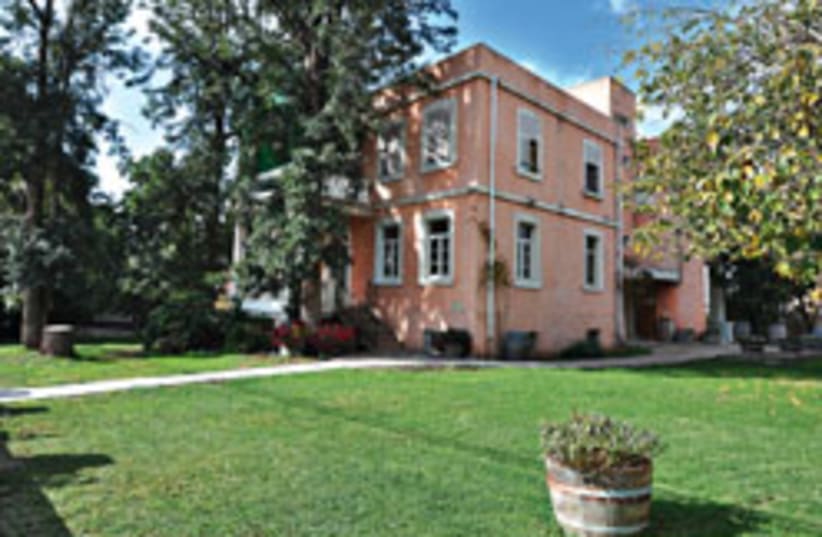The Templers were an evangelical Protestant sectfounded in Germany in the middle of the 19th century. Large numbers ofthem came to settle in the Holy Land to await the second coming ofJesus which, they believed, would coincide with the rebuilding of theTemple in Jerusalem.
Incidentallyit is easy to confuse the spelling of the Templers with the muchearlier Knights Templar who were here in Crusader times, but there is amarvelous mnemonic which means you will never get it wrong again. TheTemplars who came first spelt it with an "a" and the Templers with an"e," and "a" comes before "e" in the alphabet.
The Templers established several colonies here - in Haifa,Jaffa, Beit Lehem Haglilit, Jerusalem and in what today is called BneiAtarot. They called the settlement Wilhelma after the kaiser and formany years what is today Ben-Gurion Airport was called Wilhelma Airportbecause of its proximity.
The sect is credited with bringing many innovations inarchitecture, agriculture and industry to Palestine. The architecture,of which this is a typical example, certainly looked different from theother buildings of the period and had a definite European flavor. Noless a personality than Yoel Moshe Salomon, one of the founders ofPetah Tikva (he of the wonderful Arik Einstein song), wrote thatwalking in a Templer colony one might imagine oneself in Europe.
But much as one would like to love the Templers for their contribution to the country, all is not as cozy and gemütlichas one would have hoped. In the 1930s they became Nazi sympathizers,hung swastikas on their public buildings and greeted each other withthe Nazi salute. Wilhelma became an internment camp for them untilafter the state was established, when they were deported to Australia.
Motty Goldman was six years old when he came to live in thishouse with his parents, and he and his siblings used to kick a soccerball around the beautiful tiled floors without having too muchawareness of their aesthetic and historical aspects.
Aftereight years of living on the ground floor, the family moved upstairs,and this is where he still lives with his wife, Gil, and threechildren.
He was at first a little reluctant to allow us up to the livingarea, which is not furnished quite as they wanted it yet, as they arebusy hunting for art deco furniture which will fit in with the style ofthe house, frequenting flea markets and house sales until they findjust what they are looking for.
However, a gigantic copper air-conditioning unit certainlymerited a picture, even if the lounge suite didn't. And the living-roomwalls are painted a rich wine color, as if to emphasize the centralrole of wine-making in their lives.
The house was built in 1932, making it one of the more modernTempler buildings, and it combines the traditional modesty of otherTempler structures with the art deco features appropriate to theperiod. According to the Goldmans, it is the only Templer building inthe country open to the public.
The original Templer settlers lived in what later became thestable and, according to tradition, they said they would build anotherhouse when they had money and leave their first abode for the animals,which they did. Today the stable houses a cooking school run by anothercompany.
On Friday mornings the public is invited to visit the home andtaste some of Motty's excellent wines, while Gil serves cheeses,quiches, salads and good coffee.
"The idea is to present the house as a peaceful oasis,recalling another, more tranquil time," explains Motty. "We have quietbackground music playing and, while there is nothing dramatic in thedécor, we feel as though the house conveys something special with itssimplicity and homey feeling."
The shapes of the windows, the stone balconies and roundedwalls all testify to the 70-plus years the building has been standing,while the tiled floors, all different, have remained in remarkably goodcondition. The original frosted glass is still in the upper half of thedoors which lead from the entrance hall to what is now the café. Acrystal chandelier, an old restored chaise longue and ornate chairs ofan undetermined provenance contribute to the atmosphere of anothertime. The original banisters with their carvings of stylized flowersand bubble moldings are still in pristine condition. Outside, a deckhas been added for visitors to sit and enjoy the garden while sippingtheir wine, and it blends in seamlessly with the rest of the house.
The basement has been turned into a conference room andvisitors' center where wine-tasting courses are given and some bottlesof the prize-winning wine line the shelves. At the entrance to the roomMotty has a quite extensive collection of farming tools and all kindsof utensils from another age in a wall-long display.
The village of Bnei Atarot contains many other examples ofTempler homes, and every Friday a play is performed, in costume, forthe benefit of visitors to tell the story of the place, recreating thelife of the first settlers.
